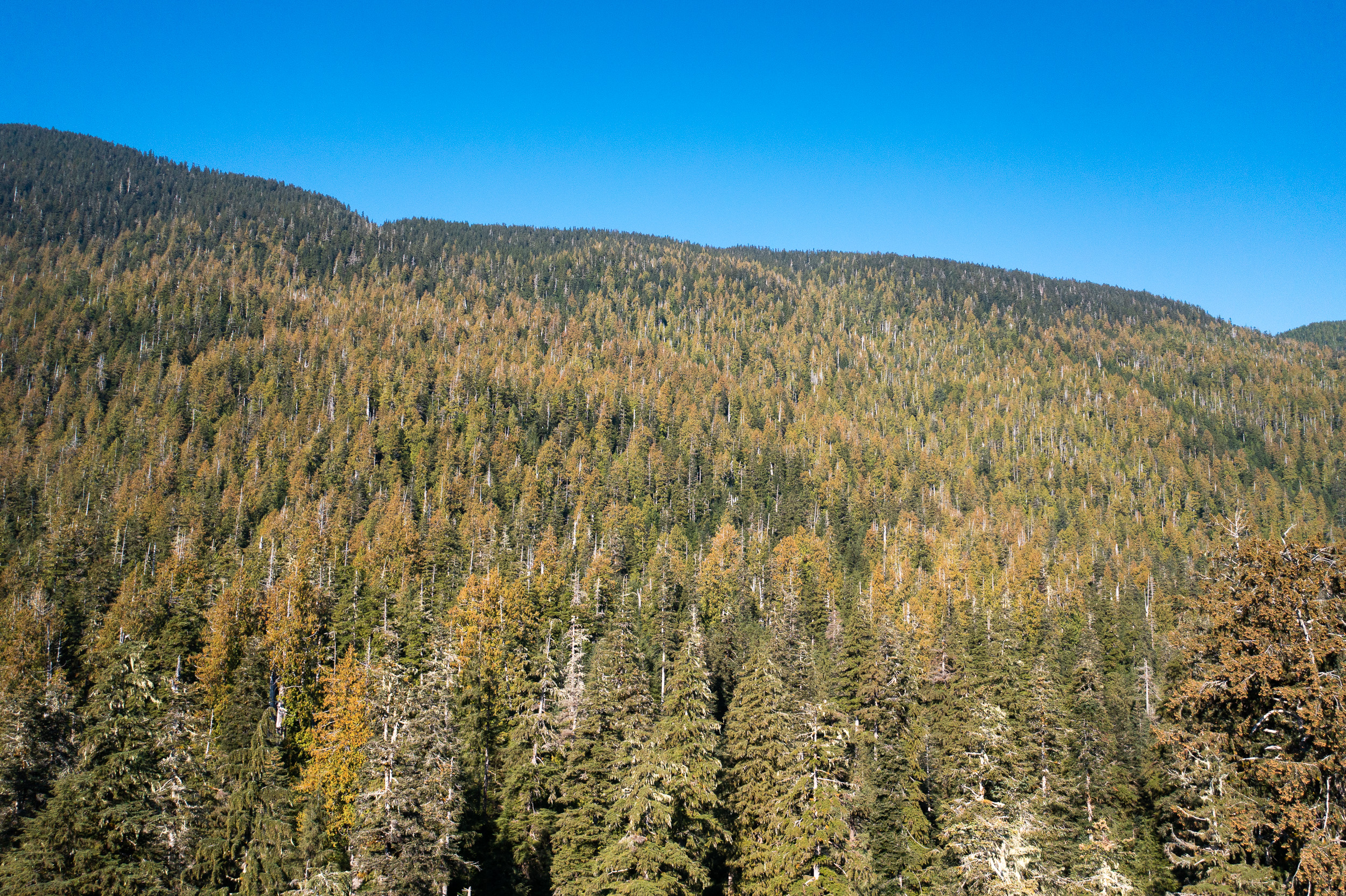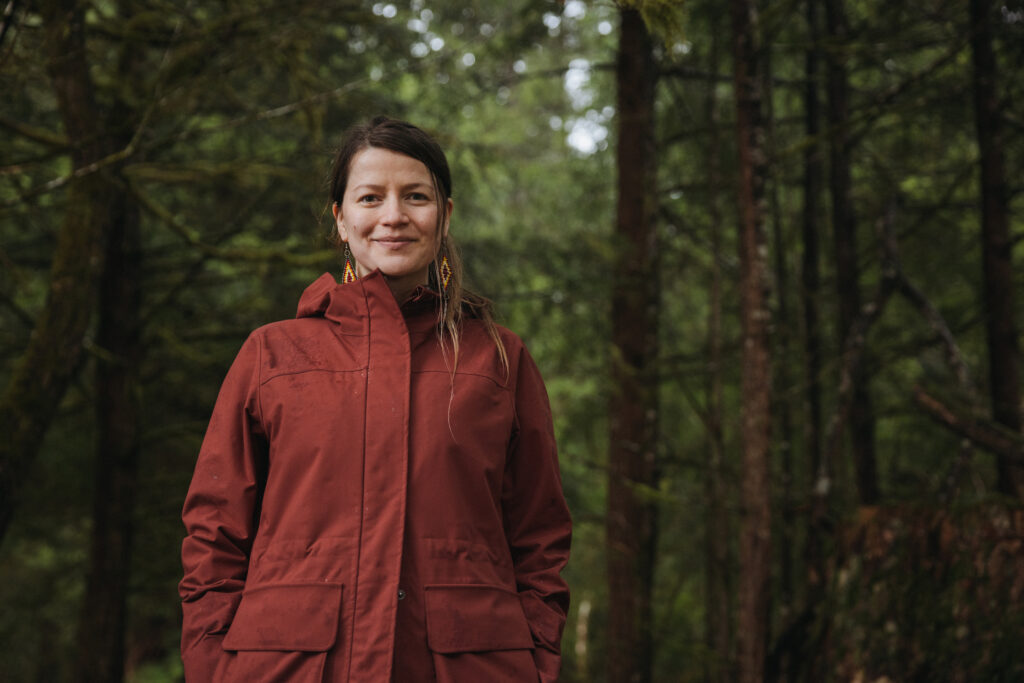
The Right Honourable Mary Simon aims to be an Arctic fox
Canada’s first-ever Indigenous governor general doesn’t play favourites among our majestic natural wonders, but she...
In the depths of this record-breaking B.C. drought, pretty much everyone I know is tormented by two opposing sentiments: 1) Overwhelming joy at the endless summer we’re having and 2) A growing sense of anxiety about how nearly three months with no rain in much of B.C. is impacting, well, all other living things.
While much of southern B.C. smashes temperature records and wildfires run rampant in mid-October, it’s hard to avoid the feeling that we’re a bit like a frog in a pot of boiling water: slowly dying.
A video posted on Twitter by William Housty last week, which showed a dry creek in Heiltsuk territory full of dead salmon, racked up nearly 200,000 views and inspired dozens of news articles.
“We knew that the water levels had been low because we had such a dry end of the summer,” Housty said, but still he was “shocked” to see how bad it was.
“This isn’t just about the drought. This is about long-term persistent climate change that we’ve been living with for some time,” says Scott Hinch, a professor of fisheries conservation in the University of British Columbia’s department of forest and conservation sciences. “Salmon habitats have been changing over the last 20 to 25 years.”
Those changes include both higher water temperatures and big variations to water levels.
“Salmon are suffering death by a thousand cuts. If they’re not experiencing higher temperatures, they’re experiencing areas where there’s very little water, or they’re seeing water at levels either high or low that they’re historically not normally experiencing.”
While some salmon are being stranded as streams dry up, as was the case in Heiltsuk territory, in other cases salmon are waiting in the ocean or in a lake for their spawning stream to appear in the first place. All that waiting around causes its own problems.
“These adult migrants are on a one-way ticket to death. Once they’ve initiated their migrations to leave the oceans, it’s a one-way ticket. They can’t turn around. They have to keep going,” Hinch says. “They can hold off for maybe a week or two, but their biological clocks are ticking … They are going to die, potentially unspawned, if they can’t get to their spawning streams.”
Richard Hebda, an ecologist who has studied the impacts of climate change on ecosystems, predicted 30 years ago that western red cedars would struggle in a warmer, drier climate.
“Most trees have a way of dealing with drought in the late summer, but this is well beyond, I suspect, what many of them can handle,” he said. “I never thought it would take place this quickly … These barometers are telling us in no uncertain terms that transformation of our natural landscape is taking place — and it’s irreversible.”
Several years of dry conditions are catching up not only with red cedars but also with Douglas fir trees — which are typically seen as more adapted to the drier climate of southern Vancouver Island — Hebda said.
“They don’t like it when it’s dry in October,” he says, looking out his window at a Douglas fir to confirm that its needles are dying. “That’s unusual.”
Over the last four to five years, Douglas firs on rocky knolls and shallow soils have been dying.
“We have to save what we have now,” Hebda said. “This whole business of old-growth logging is just totally inappropriate in terms of climate change because it’ll never be replaced. There’ll never be old-growth of the kind we have now.”

Hebda says on top of the more obvious die-off of salmon and trees, there’s the underlying biodiversity crisis that many people don’t see — the bears and the birds that rely on western red cedars, for instance.
“Everything is connected. If you take away one of the major elements of that connection system, you utterly alter it,” he said.
Hebda predicts red cedars will essentially disappear from eastern Vancouver Island by 2050.
“Our demands on nature all over the globe are way beyond what nature can handle in terms of biological diversity, which is the basis for the diversity of life,” the 72-year-old Hebda says, trailing off as he watches a hummingbird pollinate his fuchsia.
“It’ll be a very, very different place by 2050.”
While Hebda describes humans as “beyond greedy,” he emphasizes that there’s hope in that we know how to live in different climates and we now know more than ever about how to live sustainably.
“We just have to change,” he says.
It turns out that salmon may be better at changing than humans.
“The species are not going to just disappear,” Hinch says. “What we’re going to start to see over time is a shuffling of populations.”
Some salmon populations in the U.S. are on the verge of extinction and numerous populations in the Fraser Basin are listed as endangered or threatened, Hinch notes. “As climate change wreaks havoc it is going to push some populations over the edge.”
“As evidence of how fast things are changing, we now have strong populations of salmon in the Arctic,” he says. “We didn’t have those a decade ago. The species are voting with their fins.”
For humans, however, moving can be more complicated. Andrea Reid, a citizen of the Nisg̱a’a Nation who leads the University of British Columbia’s Centre for Indigenous Fisheries, said she’s really cognizant of how drought is transforming her nation’s whole watershed.
“I’m told by some of my Elders that we used to have more than 500 spawning creeks and streams in the Nass River valley. Now we have just over 300, so we have lost considerable habitat for salmon. The impacts are really large for fish and also for people here and across B.C. that depend on these organisms not only for food, but for core elements of our cultures, languages and traditions.”

While many people are paying attention to the plight of salmon in this particularly dry moment, the issue is not a new one.
“It is a tragedy and one that we’re already living,” Reid says. “We’re seeing communities effectively cut off from salmon access all over the province of British Columbia. We’re seeing that play out over the past many decades.”
Reid recently co-hosted an international Indigenous salmon peoples gathering and heard stories from around the globe about the loss of salmon.
“I heard from our brothers and sisters from Kamchatka to the Yukon to Sámi in northern Finland and Norway all talk about the centrality of salmon and what the loss of salmon means for all of our peoples,” she said. “For everyone, it’s a very scary future to look to because there is this question of ‘who are we without salmon?’ ”
The importance of salmon in Indigenous cultures also means people are willing to fight to protect them, Reid said.
“We see lots of creative solutions emerging but whether or not that can keep pace with the level of change, that remains to be seen,” she said.
Housty hopes that the viral salmon video shows people “that this isn’t just a problem that the Heiltsuk are facing.”
“The only way we’re going to turn things around is to do it together on a larger global scale,” he said.
For now, there’s still no rain in the forecast for most of British Columbia. And when the rains do come, the long drought will increase the chance of catastrophic flooding like we saw last year.
It’s a disorienting roller coaster ride: heat domes, wildfires, floods, droughts. What’s clear is the climate is changing at an alarming rate — and whether you’re a fish, a fir tree or a human, the consequences are becoming hard to ignore.
— With files from Lindsay Sample
Get the inside scoop on The Narwhal’s environment and climate reporting by signing up for our free newsletter. A $335 million funding commitment to fund...
Continue reading
Canada’s first-ever Indigenous governor general doesn’t play favourites among our majestic natural wonders, but she...

In Alberta, a massive open-pit coal mine near Jasper National Park is hoping to expand...

A trade war could help remake B.C.’s food system, but will family farmers be left...
